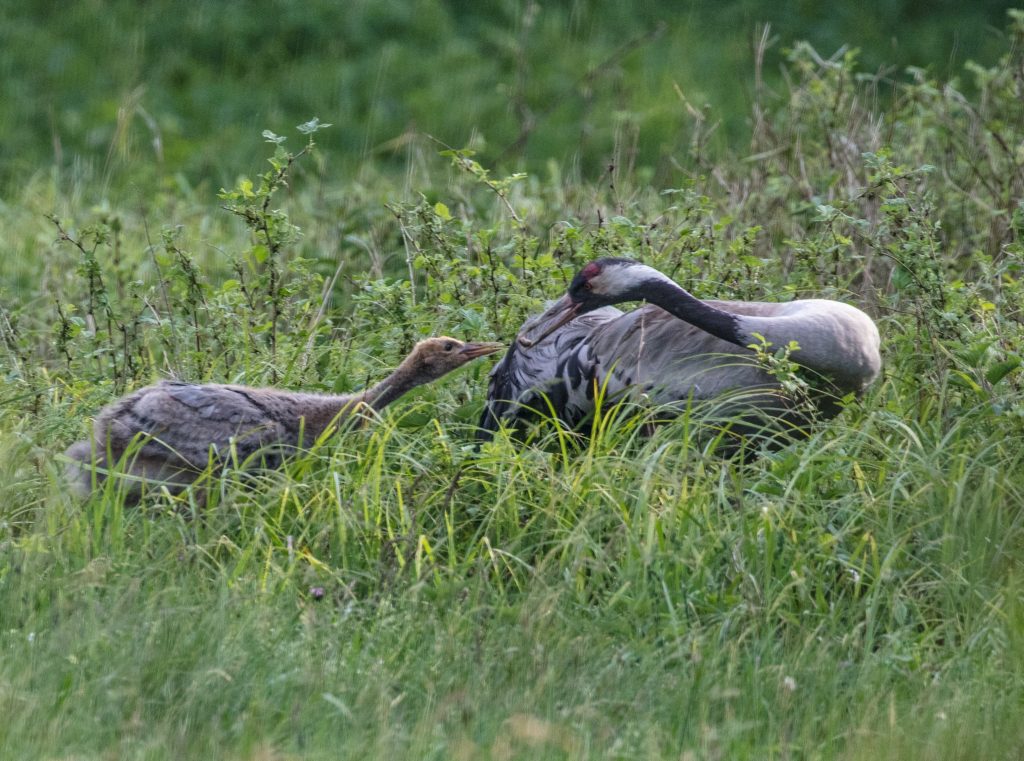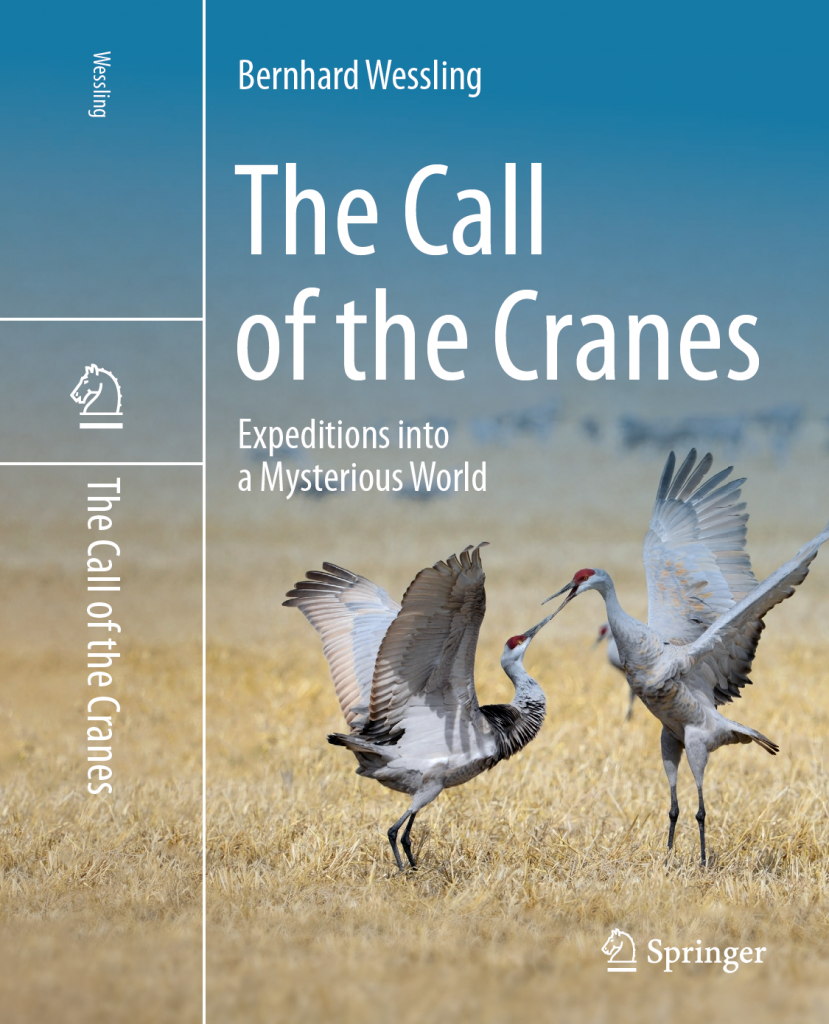
bioacoustic crane research and
Whooping crane reintroduction project

In the past many years, I have been active in crane protection and crane research on a national and international scale. Starting 1996, my focus changed towards crane vocalisation research, monitoring of cranes by voiceprinting (for which I developed a method). I intensively studied the common Crane (grus grus) in 3 regions in Germany, the Red-Crowned Crane in Japan and Korea (in the Demilitarized Zone between North and South Korea), and the Whooping Crane (US, in the wintering grounds in Aransas, Tx), in addition I made voice recordings of other crane species like sandhill, white-naped, black-necked cranes. The following gives links to publications resulting from this work. The biggest achievement has been to contribute clean and clear recordings of wild Whooping Cranes which had been extremely useful (and still are) for raising and flight training of Whooping Crane chicks hatched in captivity (for migration following an ultralight airplane from Wisconsin to Florida where they get released into the wild).
A narrative popular science book about my crane research using a new bioacoustic method – with extremely surprising results about the cranes‘ dynamic relationships, intelligence, self-conscience, migration culture and more.
– research in the wild in Europe, Asia and North America.
How faithful are cranes to their partners really? Can cranes think? How did crane migration come about?
Cranes are enigmatic birds. Only very little is known about the behaviour of these graceful dancers. The renowned naturalist and crane expert Bernhard Wessling takes us on exciting and adventurous expeditions into their hidden world and gets to the bottom of the myths surrounding these birds of happiness. With the help of a specially developed bioacoustic method, Dr. Wessling studied Eurasian, Red-Crowned, Sandhill and Whooping Cranes, all in the wild. He has researched their intelligence, social dynamics and communication and engaged in their protection. Impressively illustrated and lively narrated, this book presents his findings on their individually unique lives and relationships, their ability to adapt and solve problems, and their emotions. His observations allow us to delve deeply into the cranes‘ way of life and consciousness, often demonstrating the surprising similarities between humans and animals. An amazing work about the spirit of discovery, humility and respect for nature in the tradition of Alexander von Humboldt.
how do cranes produce their calls?
how to evaluate crane call recordings?
Look here to see the sequence of analysis and some examples
digital recording creates a 3D spectrogram, usually you only see 2D spectrograms and those even always between zero and 20 000 Hertz which is not helpful, I look at 2D spectrogram between 600 and 1200 Hz, or (Whooping Cranes) 600 and 1300 Hz). The 3D spectrogram will be reduced to a so-called „power spectrum“. Such spectra from various recordings in a given and in later or previous years can be compared and will show whether the calls have been made by the same pair or by different pairs, and also whether male or female have a different partner.
further links for your deeper information
Publications about Crane Calls Sonagraphy and Monitoring


